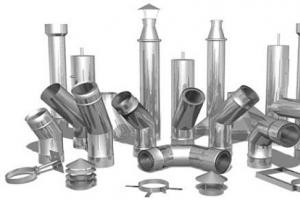The human immunodeficiency virus is called the plague of the 21st century, because it is impossible to completely cure it; it is only possible to prevent the development of AIDS, but much more important is to prevent the pathogen from entering the body. Since the retrovirus is transmitted through blood contact, there is a possibility of HIV infection in health care facilities (health care institutions). If prevention standards are followed, nosocomial HIV infection is almost impossible, but mistakes by medical personnel can have fatal consequences.
When is it possible to become infected with HIV in a hospital?

The retrovirus circulates in human blood, which means that during any manipulations accompanied by contamination of medical instruments with this biological fluid, it gets on them. If for some reason they were not processed correctly, but are used in another patient, then the pathogen enters the blood of a healthy person. This is how nosocomial HIV infection occurs.
In drops of blood outside the human body, the virus can live and remain infectious for up to a week; it is resistant to ultraviolet radiation, so quartzing does not kill it. At the same time, the pathogen itself, without blood, is unstable and dies within a few minutes, so household infection by airborne droplets is also impossible.
What procedures can infect a patient with HIV?

The risk of transmission of infection exists during the following manipulations:
- Transfusion of whole blood, less often - its components. Maximum risk with direct transfusion (in modern medicine - an extremely rare method);
- Surgical operations, including endoscopic ones. Maximum risk during gynecological operations;
- Intravenous injections and infusions, blood sampling from a vein (the use of disposable syringes has almost completely eliminated this route);
- Dental procedures;
- Some gynecological manipulations.
If safety, hygiene and sanitation rules are followed, HIV transmission in health care facilities is quite rare, but, unfortunately, health workers can neglect these rules, putting their own health and the patient’s at risk.
Measures to prevent HIV infection in health care facilities
Because the virus is extremely dangerous, preventing hospital-acquired HIV infection is very important. For each of the manipulations that can lead to infection, there are preventive measures.
Prevention of HIV infection in medical institutions during blood transfusion

Currently, whole blood transfusions are extremely rarely practiced; as a rule, its components, plasma or red blood cells, are used for blood transfusions. To prevent hospital-acquired HIV infections, each donor must be tested for diseases transmitted through blood contact, including immunodeficiency. Donor blood must undergo additional tests and special treatment to prevent infection of the recipient.
In emergency cases, one of the oldest methods of blood transfusion is sometimes used - direct. Modern instructions for preventing hospital-acquired HIV infection strongly discourage the use of this method due to its very high danger for the recipient.
Measures to prevent HIV infection in inpatient health care facilities
A standard HIV prevention measure in health care facilities is a blood test for the presence of a retrovirus upon admission to hospital. This test is taken from all incoming patients; it can be taken in the emergency room or in the department where the patient was hospitalized. Results are received the next day. If an infection is detected, a note is made in the medical history and on the appointment sheet. It is intended for medical personnel only.
To prevent hospital-acquired HIV infection, all manipulations involving blood (sampling, injections, placing IVs) must be carried out strictly with gloves. They need to be changed after each patient. Reuse of syringes, hollow needles, scarifiers, catheters and vasocans is not allowed. All instruments intended for reusable use must be thoroughly washed from traces of blood and sterilized at a temperature of less than 100˚ (at this temperature the retrovirus dies instantly). Using the same instruments on different patients without sterilization is strictly prohibited.
Measures to prevent HIV infection in health care facilities include thorough cleaning of wards, treatment rooms, and especially operating rooms. The disinfectants used kill the virus. In some hospitals, in addition to disinfectants, it is customary to add hydrogen peroxide to the water for washing floors and work surfaces. It helps to better remove traces of blood, and, as a result, eliminate the causative agent of immunodeficiency. Since the virus is resistant to ultraviolet radiation, quartz treatment does not apply to measures to prevent HIV infection in medical institutions.
Is it possible to become infected with HIV in a hospital: in surgery and gynecology?

Even endoscopic manipulation is impossible without contact with the patient’s blood, therefore increased demands are placed on operating rooms in terms of preventing HIV infection in a medical institution. Cleaning should be done after each operation, in which case the floor is thoroughly washed, the operating table is disinfected and linen is changed. Used instruments must be washed and sent for sterilization.
There should be at least an hour between interventions in the same operating room. Since the risk of infection during surgical and gynecological procedures is quite high, the requirements for the sanitary condition of operating rooms are much higher than for ordinary wards, and this is also one of the measures to prevent HIV infection in health care facilities.
Dentistry

When visiting a dental clinic, a card is created for each patient, which indicates whether he or she has an immunodeficiency. Most often, this information is recorded from the words of the patient, but he may not know that he is sick, so the risk of contracting HIV infection in health care facilities also exists in dentistry. Since clinics do not always take blood tests for the presence of a retrovirus, increased demands are placed on staff and equipment. In such institutions, each doctor should have several sets of instruments in order to be able to completely change them after each patient.
Staff can only work with gloves, again, changing them after each patient. Devices that cannot be subjected to routine disinfection must be thoroughly wiped with special solutions.
Where is it impossible to become infected with the immunodeficiency virus?

If an immunodeficiency infection occurs in a hospital, it is only possible through contact with blood. You cannot become infected by being in the same room with a patient suffering from AIDS, or eating at the same table with him. They cannot infect HIV in a hospital if the patient has not undergone operations, IVs or injections. When visiting doctors of therapeutic specialties, for example an otolaryngologist, it is impossible to become infected with HIV in the hospital. And, of course, it is impossible to catch an infection while sitting in a general queue.
Despite the existing risk, there are not many people who can truly say: “I was infected with HIV in the hospital,” there are many more who, thanks to a visit to a doctor, learned about their diagnosis and can slow down the progression of the disease.
An emergency situation may occur to an employee while performing his immediate duties. What this means for a medical professional and how to avoid such unpleasant situations will be discussed in this article.
Circumstances of the emergency
It is no secret that every medical worker daily in the implementation process performs dozens of different manipulations, such as, for example:
- Performing injections;
- Disinfection of instruments;
- Operation of medical devices;
- Medical waste management;
- Accounting, storage and use;
- Carrying out ;
- and etc.
When performing the above manipulations, medical an employee may find himself in completely different emergency situations, For example:

- contamination of the skin and mucous membranes of workers with blood and other biological fluids of patients;
- injections and cuts with piercing and cutting instruments;
- scattering (spill) of medical waste of classes B/C;
- destruction of mercury-containing lamps or thermometers ( mercury pollution);
- unfavorable situations when working with disinfectants (accidental poisoning with a disinfectant, chemical burn, other unfavorable situations);
- electric shock or other emergency situations when working with medical equipment, for example with installations for disinfection/ ;
- electric shock or other emergency situations during cleaning activities;
- adverse effects of ozone on health care workers;
- destruction of bactericidal lamps (mercury pollution);
- adverse effects of radiation on medical workers.
It is worth remembering that the occurrence of an emergency does not always lead to an accident at work. In order to distinguish between these concepts, we advise you to read our article “”.
In order to avoid such emergency situations, you should follow the work rules when performing various types of activities. The employer should introduce local Instructions into the work of staff with clear algorithms for action in certain situations (for example, Instructions on the rules for handling medical waste, Instructions on the rules for recording, storing and using disinfectants, other instructions).

For example, in his Letter No. 44-18-3461 dated October 26, 2006, he obliged the healthcare institutions under his jurisdiction to develop in each institution instructions on labor protection when working with blood and other biological fluids of patients for conducting workplace training with employees of the “group risk." The Moscow Department of Health has attached sample instructions to this Letter.
The basic rules for the work of medical personnel include the following:
- Each medical worker must observe personal hygiene measures (observe the standard of hand hygiene, work, use, etc.);
- Medical workers must take precautions when working with piercing, cutting instruments, and needles;
- It must be assumed that every patient is potentially dangerous for infectious diseases;
- When working in offices where medical personnel may come into contact with biological fluids of patients, there must be an Anti-HIV first aid kit.
- In emergency situations, carry out emergency prevention;
- Upon completion of work, perform the necessary manipulations:
- Place disposable instruments in a puncture-resistant container;
- Place items to be used further in containers for processing;
- Treat table surfaces with disinfectants.
The uniform composition of such a first aid kit has not been established, but taking into account the data reflected in the above Letter, in Appendix 12 to SanPiN 2.1.3.2630-10 “Sanitary and epidemiological requirements for organizations engaged in medical activities”, approved Resolution of the Chief State Sanitary Doctor of the Russian Federation dated May 18, 2010 No. 58 and taking into account the provisions of SP 3.1.5.2826-10 “Prevention of HIV infection”, approved by the Resolution of the Chief State Sanitary Doctor of the Russian Federation dated January 11, 2011 No. 1, it can be concluded that the first aid kit should include the following:

- 70% ethyl alcohol;
- cotton gauze swabs;
- 5% alcohol solution of iodine;
- bactericidal patch;
- dressing.
In accordance with Article 11 Federal Law of March 30, 1999 No. 52-FZ“On the sanitary and epidemiological welfare of the population,” legal entities and individual entrepreneurs are required to carry out preventive measures.

Very often, during the work of medical personnel, injections and cuts occur. In order to avoid possible infection, the employee should follow the rules for working with piercing and cutting instruments, as well as know and follow safety precautions, which include mandatory preventive measures.
Preventive measures are carried out on the basis that each patient is regarded as a potential source of blood-borne infections (hepatitis B, C, HIV and others).
A plan of preventive measures must be drawn up in each medical organization and approved by the head of this organization. This requirement is contained in the “Sanitary and Epidemiological Requirements for Organizations Carrying Out Medical Activities” (SanPiN 2.1.3.2630-10), approved by Resolution of the Chief State Sanitary Doctor of the Russian Federation dated May 18, 2010 No. 58.
There are several basic activities and rules that must be organized in a medical organization and must be followed by employees. Therefore, every medical worker must know and comply with:

- Standard for the treatment of staff hands and patient skin;
- If necessary, carry out sanitary treatment of the patient in the reception department of a medical organization;
- Meals for medical personnel should be organized in a separate room, and for patients, if possible, in a separate building;
- All requirements of sanitary standards must be observed in the workplace;
- Personnel must be provided with personal protective equipment (more about this in the article “”);
- If your hands are dirty, they must be washed and treated with an antiseptic;
- For injections and cuts, you must wash your gloved hands, remove the gloves, squeeze the blood out of the wound, wash your hands, treat the wound;
- If necessary, carry out emergency HIV prevention. It must be carried out in accordance with Appendix 12 “Emergency prevention of parenteral viral hepatitis and HIV infection” SanPiN 2.1.3.2630-10, but taking into account the provisions of SP 3.1.5.2826-10 “Prevention of HIV infection”, in particular, it is not necessary to use permanganate potassium (potassium permanganate). This is permissible due to the fact that SP 3.1.5.2826-10 was approved eight months later than SanPiN 2.1.3.2630-10 and, therefore, has priority in terms of regulatory force.
For reference: potassium permanganate (potassium permanganate) is a precursor of narcotic drugs and psychotropic substances and is included in Table III of List IV of the list of narcotic drugs, psychotropic substances and their precursors subject to control in the Russian Federation, approved by Decree of the Government of the Russian Federation of June 30, 1998. No. 681.
- Carry out disinfection measures;
- Carry out preventive immunization.
Follow us
By submitting an application, you agree to the terms of processing and use of personal data.According to the Methodological Recommendations “Prevention of infection, including medical workers, with the human immunodeficiency virus in the workplace,” approved by the Ministry of Health and Social Development of Russia on August 6, 2007 No. 5961-РХ, in Russia the most common occupational risks of HIV infection are:

- Nursing staff - procedural nurses working in hospitals and departments providing care to HIV-infected patients;
- Operating surgeons and operating nurses;
- Obstetricians-gynecologists;
- Pathologists.
In this regard, it is very important for medical personnel to observe all the necessary precautions and carry out a whole range of preventive measures, most of them are contained in various regulations, for example, in such as the Resolution of the Chief State Sanitary Doctor of the Russian Federation dated January 11, 2011 No. 1 “On approval of SP 3.1.5.2826-10 “Prevention of HIV infection” (together with “SP 3.1.5.2826-10. Sanitary and epidemiological rules...”). Equally important will be the excellent knowledge of medical personnel on how to act in a particular emergency situation associated with the risk of contracting HIV infection.
| 1 | 2 |
|---|---|
| Precautionary measures |
|
| Prevention measures |
|
| Actions of a medical worker in an emergency that has already occurred |
Start taking antiretroviral drugs as soon as possible for post-exposure prophylaxis of HIV infection. |
For emergency prevention of the disease, people at risk of contracting HIV infection are prescribed antiretroviral drugs.

Antiretroviral medications should be started within the first two hours after the accident, but no later than 72 hours.
All health care organizations should be provided with, or have access to, rapid HIV tests and antiretroviral drugs when necessary. A stock of antiretroviral drugs should be stored in any medical organization at the discretion of the health authorities of the constituent entities of the Russian Federation, but in such a way that examination and treatment can be organized within 2 hours after an emergency. The authorized health care facility must designate a specialist responsible for the storage of antiretroviral drugs, a storage location with access, including at night and on weekends.
According to information published in Letter of the Ministry of Health of Russia dated March 22, 2013 No. 14-1/10/2-2018, every month 65% of medical workers receive microtrauma to the skin, but no more than 10% of injuries and emergencies are officially registered.

It is worth remembering that employees of medical organizations must immediately report each emergency to the head of the unit, his deputy or a senior manager.
A number of methodological documents require mandatory recording and investigation of emergency situations among medical workers performing the procedure, and for each case an entry must be immediately made in the microtrauma logbook or in the emergency logbook.
However, there is no standardized form for such journals. However, based on the requirements of SanPiN 2.1.3.2630-10 for information to be recorded in such a log, a medical organization can usually easily develop the form of such a log on its own.
An emergency can happen to any healthcare worker. But it is always worth remembering that the likelihood of its occurrence can be reduced through unquestioning compliance with the requirements and execution of all job descriptions.
Normative legal acts:
- Federal Law of March 30, 1999 No. 52-FZ “On the sanitary and epidemiological welfare of the population”;
- Resolution of the Chief State Sanitary Doctor of the Russian Federation dated May 18, 2010 No. 58 on the approval of “Sanitary and epidemiological requirements for organizations engaged in medical activities” (SanPiN 2.1.3.2630-10);
- Resolution of the Chief State Sanitary Doctor of the Russian Federation dated January 11, 2011 No. 1 “On approval of SP 3.1.5.2826-10 “Prevention of HIV infection” (together with “SP 3.1.5.2826-10. Sanitary and epidemiological rules...”).
The increase in the number of HIV-infected people in the Russian Federation and the increase in the number of medical procedures performed during the provision of inpatient and outpatient medical care to them has led to the fact that over the past five years the number of registered cases of injury to medical personnel has increased by 1.5 times, which entails the need for timely organization and conduct of chemoprophylaxis for occupational HIV infection and provision of medical organizations with antiretroviral drugs for these purposes.
According to the reports of investigations of biological accidents, in half of the cases there were violations of biological safety requirements, including the failure to use personal protective equipment and the violation of the manipulation algorithm.
Transmission of the human immunodeficiency virus (HIV) in a healthcare setting is possible: from a patient to a healthcare worker; from health care worker to patient during invasive procedures; from patient to patient.
Biological fluids that can cause HIV infection through contact: blood, semen, vaginal secretions, any fluids mixed with blood, synovial, cerebrospinal, pleural, pericardial and amniotic fluids containing HIV cultures and culture media.
Patient's HIV status and stage of disease. If the patient has an acute infection or a late stage of the disease (AIDS), then there is more virus in the blood and the risk of infection is higher;
The degree of contamination of the instrument with infectious material (a needle prick after taking blood from a vein is more dangerous compared to a needle prick after an intramuscular injection);
Treatment of the wound surface (immediate rinsing of biological fluid with water and treatment with an antiseptic solution) reduces the risk of infection;
The real danger of infection of a medical worker arises when the skin and mucous membranes are contaminated with the patient’s biological fluids (blood, serum, liquor), or when they are injured during medical procedures (cuts, injections, damage to the skin with small fragments of bone, etc.).
The highest risk of infection is observed with deep lesions of the skin exposed to blood visible on a medical instrument, in contact with an instrument that was in a vein, artery, or in the patient’s body.
On average, the risk of infection when blood from an HIV-infected patient passes through the skin is 0.3 percent. For superficial skin lesions, the risk of infection is reduced to 0.1 percent and depends on the volume of blood and the amount of virus in the blood.
When performing any medical procedures, a medical worker must wear a gown, cap, disposable mask, and, if necessary, use goggles or protective shields;
All manipulations during which hands may become contaminated with blood, serum or other biological fluids should be carried out wearing medical gloves (if necessary, double gloves, chain mail gloves, reinforced gloves);
Medical workers of all services of the Ministry of Defense must take precautions when performing manipulations with cutting and piercing instruments (needles, scalpels, scissors); when opening bottles, vials, test tubes with blood or serum, avoid crushing the glass to prevent cuts to gloves and hands;
Use safe medical devices with engineered protection against injury (auto-disable and self-locking syringes, vacutainers and monovets for blood collection, scalpels with a protective screen, etc.);
Instead of chemical disinfection, which requires such dangerous procedures as washing the needle and syringe, soaking and transferring syringes and needles from one container to another, use physical (hardware) disinfection methods;
If there are wounds on the hands, exudative skin lesions or weeping dermatitis, the medical worker is removed from caring for patients and contact with items to care for them for the duration of the illness. If it is necessary to perform work, all damage to the skin must be covered with finger caps and adhesive tape;
If blood or serum gets on the surface of work tables, they are treated with disinfectants with virucidal properties twice: immediately and at intervals of 15 minutes;
Blood (serum) samples are transported in test tubes or vials, hermetically sealed with rubber stoppers (screw caps); completed referral forms are attached separately;
Transportation of tubes with blood (serum) samples from department to department and across the territory of the Moscow Region should be carried out in closed containers (containers, sterilization boxes, etc.) made of material that does not deteriorate during disinfection. When transporting samples outside the Moscow Region, delivery is carried out in cooler bags.
If an emergency occurs at the workplace, a medical worker is obliged to stop work, immediately take measures to prevent HIV infection, and report the incident to the head of the structural unit or his deputy.
Unprotected skin of the face and hands - treat the area of contamination with a cotton swab moistened with 70% alcohol or an alcohol-based skin antiseptic (do not rub!), wash with running water and soap, dry with a disposable towel or napkin and re-treat with alcohol or an alcohol-based skin antiseptic;
Rinse your mouth and throat with 70% alcohol or 0.05% potassium permanganate solution, spit out (do not swallow!); to prepare a 0.05% solution, dissolve 0.05 g of potassium permanganate in 100 ml of water;
Rinse eyes thoroughly with running water, then with a prepared 0.01% solution of potassium permanganate (to prepare a solution, dissolve 0.05 g in 500 ml of water) or 1% solution of boric acid;
All cases of biological accidents registered in the MO log must be considered at meetings of the commission for the prevention of nosocomial infections and monitoring compliance with biological safety requirements (hereinafter referred to as the Commission) of the MO where the accident occurred. The commission analyzes the event, establishes the connection between the cause of the injury and the performance of official duties by the medical worker, and takes measures to prevent similar situations.
In order to document the fact of a biological accident when working with an HIV-infected patient, in addition to an entry in the journal, the Commission draws up a report on an industrial accident in form N-1, approved by Resolution No. 73. The report is approved by the chief physician and certified by the seal of the medical organization in question. within which the powers of the Commission extend. A copy of the report on an accident that occurred while providing medical care to an HIV-infected person or when working with material from him is sent to the regional center for the prevention and control of AIDS within 10 days.
HIV infection is an anthroponotic chronic infectious disease caused by the human immunodeficiency viruses HIV-1 and HIV-2. The disease occurs in the form of highly specific disturbances in the functioning of the human immune system, leading to its gradual weakening and complete destruction with the formation of AIDS.
The progression of AIDS is accompanied by the development of various infectious complications and secondary malignant tumors.
The sources of the HIV-1 and HIV-2 viruses are infected people. At the same time, a patient with HIV is contagious at all stages of the disease, including the incubation period.
Infection with immunodeficiency viruses can occur:
- naturally (sexually, vertically from mother to child, during natural feeding, as well as through contact with wounds and biological fluids);
- artificially. This option includes infection through transfusion of blood products, use of donor biological material (sperm, breast milk), invasive medical and non-medical procedures (tattoos, trimmed manicures, injection of narcotic drugs), etc.
People at highest risk for HIV infection include:
- taking injecting drugs;
- providing intimate services;
- non-traditional orientation;
- leading a promiscuous sex life, etc.
Comprehensive diagnostics for immunodeficiency viruses is voluntary, with the exception of the category of citizens subject to mandatory examination. Testing is carried out after individual consultations. The results of an HIV test are not communicated over the telephone; they can only be found out in person. After the study, a post-test consultation is carried out.
HIV testing is mandatory:
- before starting emergency prevention of HIV infection in an emergency;
- when performing screening of pregnant women with unspecified HIV status;
- before collecting donor materials;
- when submitting documents for admission to medical educational institutions;
- when applying for a job in the government. medical institutions and private centers and clinics (all doctors and nurses undergo regular HIV testing);
- among researchers or laboratory personnel directly working with biological materials containing HIV-1 and HIV-2 viruses;
- when preparing documents for military educational institutions and for service, as well as during conscription or entering service under a contract;
- among foreign citizens applying for citizenship or obtaining a residence permit.
- when applying for a visa to stay on the territory of the Russian Federation for more than three months.
Is it possible to work with HIV in medicine?
For medical employees, testing for human immunodeficiency viruses is strictly mandatory.
Nurses and doctors with HIV cannot be allowed to work. Also, infected employees should not work at blood transfusion stations.
Medical workers who belong to risk groups for occupational HIV infection (employees of surgical, traumatological, gynecological, dental departments, nurses in manipulation rooms, etc.) undergo mandatory examination once a year.
Also, employees whose skin and mucous membranes have been exposed to biomaterial containing HIV are subject to emergency examination using quick and standard tests.
Prevention of HIV infection among health workers
Infection of these personnel is possible while working with patient biomaterials when performing therapeutic and diagnostic procedures (especially invasive ones), as well as during the disposal of used syringes, when processing instruments, etc.
The leading causes of HIV-related emergencies include violation of safety precautions during the collection and disposal of material, non-compliance with personal safety rules related to the protection of skin and mucous membranes.
In most cases this is due to:
- neglect of barrier protective equipment (aprons, gloves, glasses, plastic shields are not used);
- violation of personal safety rules when performing invasive procedures;
- cleaning workplaces with sharp, unprotected objects left on them;
- disposal of needles and their transportation in pierceable containers, etc.
Rules for personal safety and prevention of HIV infection in medical institutions
To ensure personal protection and for preventive purposes, medical personnel must:
- Before working with any biomaterials, protect areas of the skin and mucous membranes using special waterproof plasters or bandages;
- change gloves before working with each new patient. During work, gloves should be treated with 70% ethyl alcohol. The gloves are then immediately discarded and their reuse is prohibited;
- if you are working with blood or biomaterials that may contain HIV, latex gloves should be used;
- wash your hands thoroughly with soap after handling biological material;
- use protective equipment for the face (gauze bandages) and eyes (protection with glasses or plastic shields);
- Immediately treat surfaces of work tables contaminated with blood with detergent and disinfectant solution. Treatment should be carried out twice, maintaining an interval of fifteen minutes;
- When collecting capillary blood, use a rubber bulb;
- place disposable used equipment (syringe, needle, etc.) in puncture-proof containers for further processing, disinfection and disposal;
- ensure that there is always a sufficient amount of cleaning and disinfectants at the workplace.
Nurses and doctors who have skin lesions of an exudative or eczematous nature are excluded from working in manipulation rooms, dressing rooms, etc. until complete recovery.
Emergency situation during HIV infection - algorithm of action
Prevention of infection of personnel is carried out in accordance with (the link is given to download the Order).
In the event of emergencies and emergencies related to HIV, medical personnel:
- If gloves are torn or damaged, you must immediately remove them, wash your hands thoroughly with detergents (soap) under a large volume of running water, disinfect your hands with seventy percent alcohol solution, treat the wound with 5% iodine;
- On hit:
- blood or biomaterials on the skin, disinfect the skin with seventy percent alcohol, wash with soap and water, and re-treat the skin with alcohol;
- biomaterials into the oral cavity - the mouth is washed with large volumes of running water and rinsed with 70% alcohol solution;
- biomaterials into the eyes or nose - the mucous membranes are washed with large volumes of running water or saline. Rubbing the mucous membrane is prohibited.
If clothing is contaminated with biomaterials, remove work clothes, soak them in disinfectant solutions, and then autoclave them.
The emergency situation should be reported to management immediately. All cases must be recorded in a special journal.
If there is a risk of infection, start taking medications immediately. The medications are taken within the first 2 hours after the accident. The maximum allowable period for starting prevention is the first seventy-two hours after the accident.
The following drugs are used for HIV post-exposure prophylaxis:
- lopinavir/ritonavir ® + /
- in their absence, use nevirapine ® (single dose) or abacavir ® , then standard prophylaxis according to HAART regimens begins.
New composition of an emergency first aid kit for HIV
According to the protocol, an anti-HIV first aid kit should contain:
- bottles with ethyl alcohol (70% - fifty milliliters) and five percent alcohol solution of iodine (ten milliliters);
- adhesive plaster, sterile cotton balls (twenty pieces) and gauze napkins (ten pieces);
- bandage (sterile).
In healthcare facilities, they are set out in regulatory documents approved by the Ministries of Health of the Russian Federation and the Republic of Belarus:
1. Order of the Ministry of Health of the Russian Federation dated August 16, 1994 No. 170 “On measures to improve the prevention and treatment of HIV infection in the Russian Federation”
2. Resolution of 09.09.2002 “On intensifying measures aimed at countering the spread of HIV infection in the Russian Federation.”
3. Order of the Ministry of Health of the Republic of Belarus dated 20.04.01. No. 249-D “On the provision of specialized care to HIV-infected people”
4. Information letter No. 509 a dated September 8, 2000 “On the procedure for collecting, registering, storing and transporting blood for HIV testing”
5. Order of the Ministry of Health of the Republic of Belarus 60-D “On the rules for HIV testing”
6. Order of the Ministry of Health of the Republic of Belarus 585 - D “On streamlining HIV testing”
A. all honey workers must follow universal precautions
b. when biological fluid gets on the skin, mucous membranes, or clothing. surrounding objects, on the floor - actions in accordance with regulatory documentation
V. When performing manipulation on an HIV-infected patient, treat the nail phalanges with a 5% iodine solution; double gloves; Perform the manipulation in the presence of a 2nd specialist.
d. follow the instructions when taking blood for research








